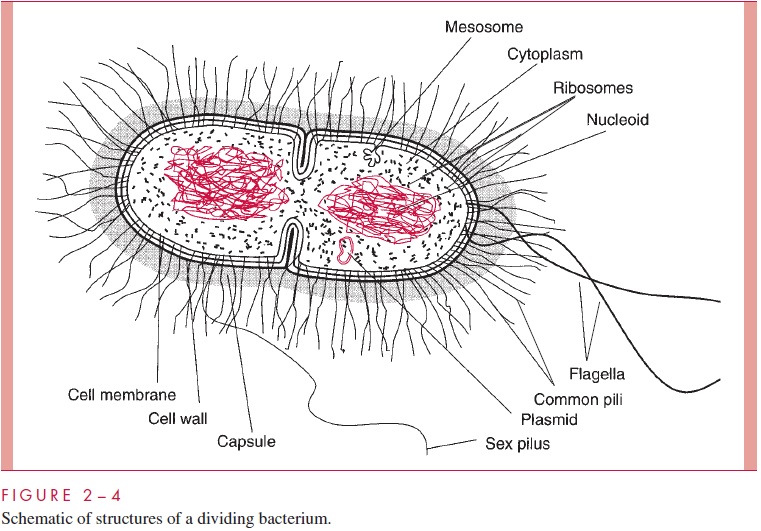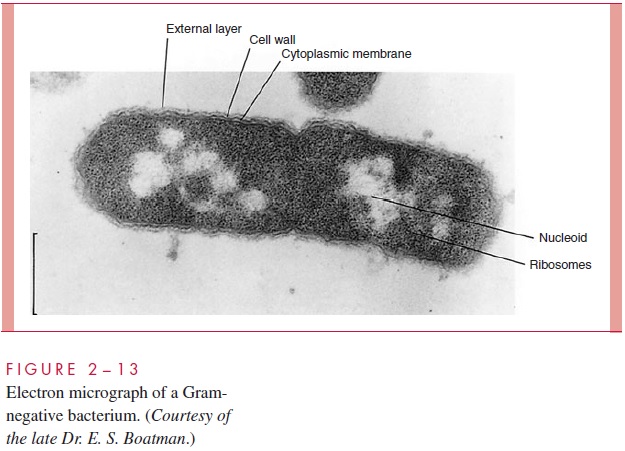Chapter: Medical Microbiology: An Introduction to Infectious Diseases: Bacterial Structures
Nucleoid - Bacterial Structures
Nucleoid
The bacterial genome resides on a single chromosome (there are rare exceptions) and typically consists of about 4000 genes encoded in one, large, circular molecule of double-stranded DNA containing about 5 million nucleotide base pairs. This molecule is more than 1 mm long, and it therefore exceeds the length of the cell by some 1000 times. Need-less to say, tight packing is necessary, and it is this packing that displaces all ribosomes and other cytosol components from the regions that appear clear or fibrous in electron mi-crographs of thin sections of bacterial cells (see Fig 2 – 13). Each region thus contains a chromosome, coated usually by polyamines and some specialized DNA-binding proteins but not with the structural organization of a eukaryotic chromosome. Because it is not surrounded by a membrane, it is not correctly called a nucleus but rather a nucleoid or nuclear body. The manner in which the DNA molecule is packed to form a nucleoid isnot yet totally known. The double-helical DNA chain is twisted into supercoils, and it is suspected that the DNA is attached to the cell membrane. Evidence indicates that the en-tire chromosome is attached to some central structure, perhaps RNA, at a large number of points (12 to 80), creating folds of DNA, each of which is independently coiled into a tight bundle. Gentle methods of lysing cells permit nucleoids to be isolated as compact particles from which DNA loops can be sprung out.

Each nuclear body corresponds to a DNA molecule. The number of nuclear bodies varies as a function of growth rate; resting cells have only one, rapidly growing cells may have as many as four. As is described, bacteria are genetically haploid for two reasons: (1) because all the chromosomes are identical and are segregated at random into daughter cells, and (2) because when rapidly growing cells slow down and form rest-ing cells, the latter have returned to a single chromosome state.

The absence of a nuclear membrane confers on the prokaryotic cell a great advantage for rapid growth in changing environments. As described, ribosomes can be translating mRNA molecules even as the latter are being made; no transport of mRNA from where it is made to where it functions is needed.
Related Topics